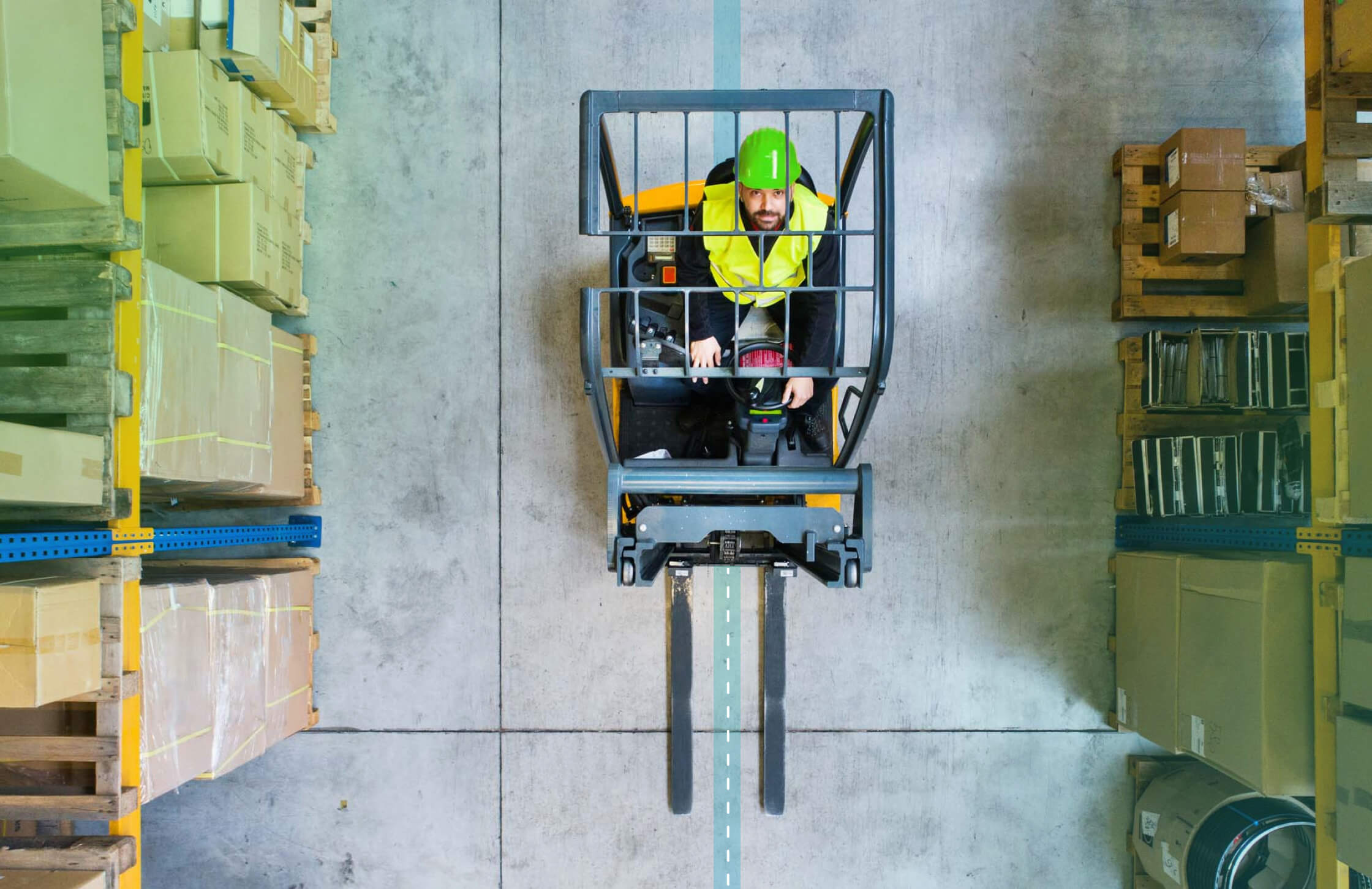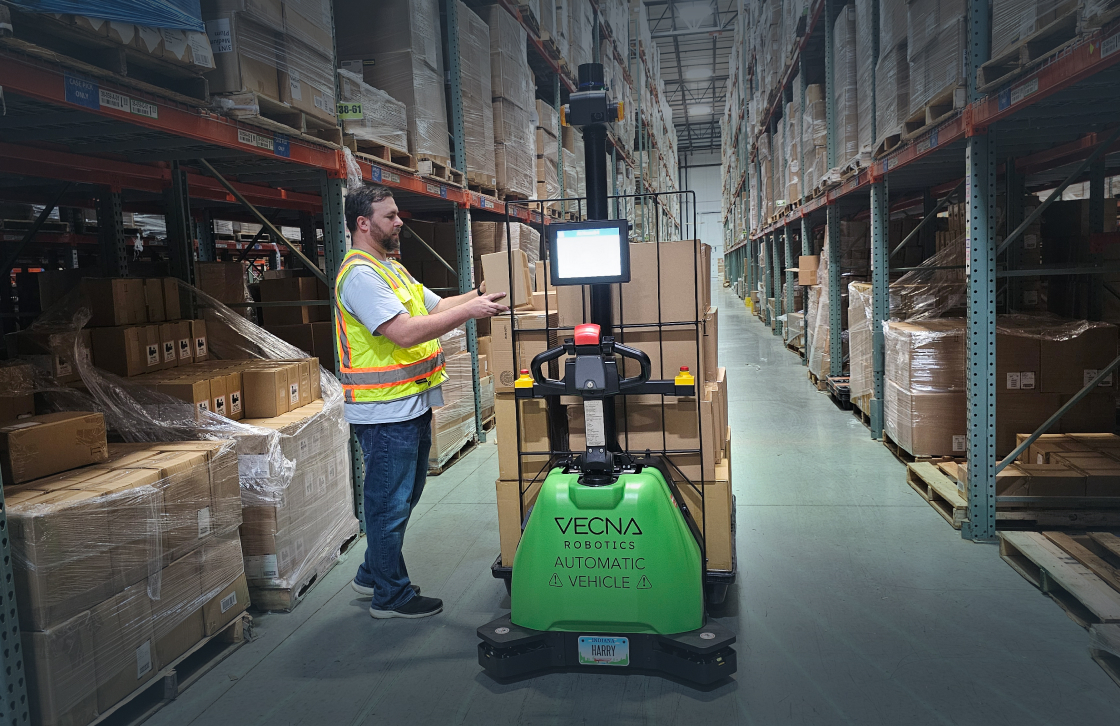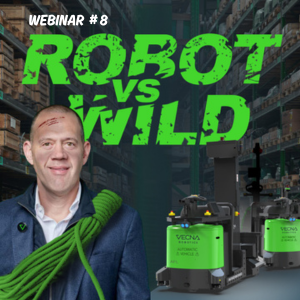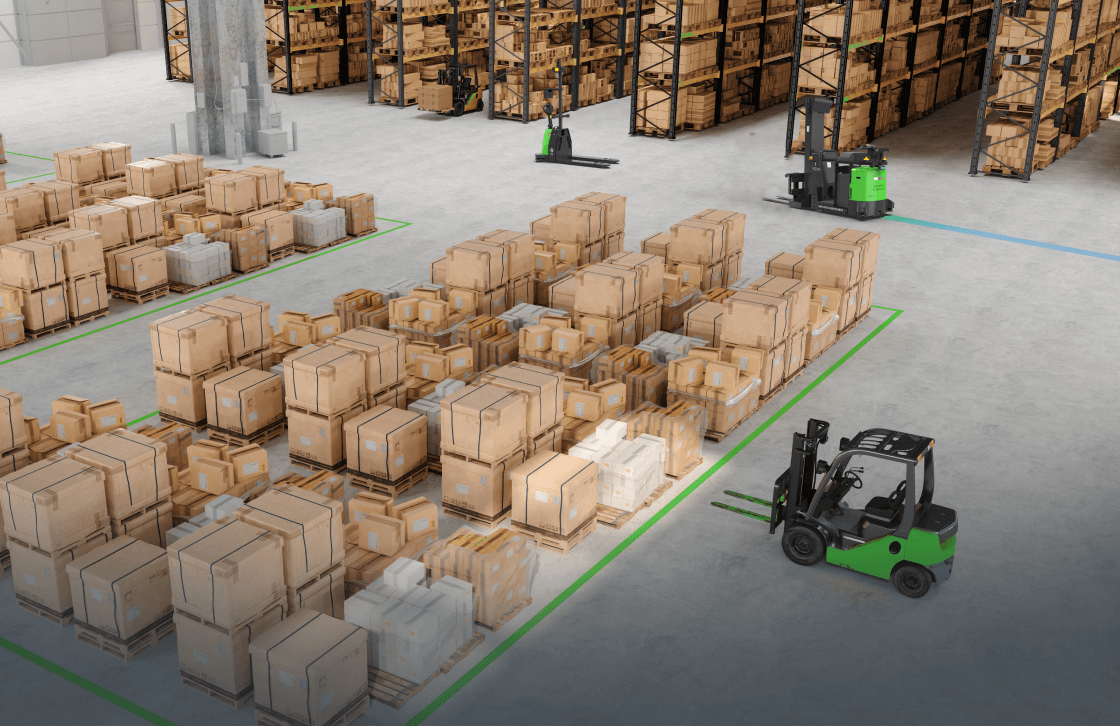What is automated material handling equipment?
Automated material handling equipment encompasses a diverse array of machines and systems dedicated to the automated transportation, storage, retrieval, and management of materials within a facility. These sophisticated technologies are engineered to enhance efficiency, accuracy, and safety in the logistics and manufacturing sectors, streamlining operations from the warehouse floor to the delivery of goods. By automating tasks that were traditionally performed manually, these systems significantly reduce labor costs, improve workflow, and minimize the potential for human error.
The evolution of automated material handling equipment has been marked by significant technological advancements, moving from the relatively simple and task-specific machines of the past to today’s highly flexible and intelligent systems. These modern systems are characterized by their adaptability, capable of reconfiguration and reprogramming to meet the changing demands of production and distribution environments. This shift from fixed to flexible automation solutions is in response to the growing need for versatility in handling a wide range of products and adapting to fluctuating market demands.
What types of equipment does this include?
This category encompasses a variety of systems and machinery designed to automate the movement, storage, and management of goods within a facility. Key components of this sector include conveyors that facilitate the seamless transport of materials across various points; robotic arms that perform precision tasks such as assembling, packing, and sorting; Automated Storage and Retrieval Systems (ASRS) that optimize high-density storage efficiency; Autonomous Mobile Robots (AMRs) that navigate and adapt to warehouse environments with agility; and Automated Guided Vehicles (AGVs), which follow set paths to transport items reliably. The industry’s expansion is on an upward trajectory, with market projections estimating its value to hit $70 billion by 2032, signifying the increasing reliance on these technologies to meet the demands of modern logistics and manufacturing.
The evolution from traditional, fixed automation systems, such as AGVs, which were once favored for their reliability in executing monotonous tasks along unchanging routes, to more adaptable solutions underscores the industry’s response to the dynamic nature of today’s market. Fixed systems, while efficient, often struggled with adaptability, making them less suited for environments where product specifications and volumes frequently change.
The advent of more flexible automation technologies, such as AMRs, represents a paradigm shift. These systems boast advanced robotics and automation capabilities that can be customized and reconfigured with relative ease to accommodate a variety of tasks. This adaptability is crucial in material handling, where the ability to swiftly adjust to new product lines, manage assorted items simultaneously, and respond adaptively to on-the-spot operational data is a considerable advantage. Such flexibility not only minimizes downtime and expedites product changeovers but also ensures that production lines can swiftly adapt to custom product demands, all while avoiding extensive modifications. This transition marks a significant step towards creating more resilient, efficient, and scalable automated material handling systems, capable of supporting the complex and varied needs of modern warehouses and manufacturing facilities.
Features and benefits of automated material handling systems
One of the main advantages of automated material handling systems is that they can significantly increase productivity and efficiency. For example, conveyors can be used to quickly and efficiently move materials from one location to another, while robotic arms can be used to automate repetitive tasks such as picking and packing. Automated storage and retrieval systems, also known as ASRS, can be used to store and retrieve materials quickly and accurately, reducing the need for manual labor. AMRs can be used to transport materials throughout a facility, reducing the need for human operators.
Another advantage of automated material handling equipment is that it can improve safety. For example, by automating repetitive tasks, equipment can reduce the risk of human error and injuries. Automated storage and retrieval systems can also be designed to reduce the risk of injury by using sensors and other safety features. AGVs can also be programmed to follow specific routes, reducing the risk of collisions with other vehicles or equipment.
Additionally, automated material handling equipment can also help to improve accuracy and reduce errors. For instance, automated storage and retrieval systems can be designed to ensure that materials are stored and retrieved in the correct location, reducing the risk of errors. Robotic arms can be programmed to pick and place items with precise accuracy, reducing the risk of errors in tasks such as packaging and assembly.
Robotics-as-a-Service (RaaS): Redefining robot deployment
Cost is a significant barrier for many companies when considering the adoption of automated material handling systems. The initial investment, coupled with maintenance and upgrades, can be overwhelming. RaaS seeks to mitigate these challenges by offering robotic solutions on a subscription or rental basis.
Instead of purchasing robots outright, companies can lease or pay for robotic services based on their usage, similar to how one would pay for cloud storage or software-as-a-service. This model not only reduces upfront costs but also ensures companies have access to the latest technologies without being burdened by obsolescence. With RaaS, industries can scale their operations up or down based on demand, ensuring they only pay for what they need.
Automated material handling equipment, provided through RaaS, can be deployed in warehouses, distribution centers, and production lines. They are designed to adapt to various tasks, from sorting and packaging to transporting goods. Since RaaS providers handle maintenance, updates, and support, industries can conserve capital and focus solely on optimizing their operations.
How to design and deploy automated material handling systems fast
Fortunately, Vecna Robotics has designed a simple, 5-step guide called “From No Bot to Robot” that can get you started immediately with automation and achieve scale within 12 months of your initial deployment.

Step 1: Assess
We first pinpoint the issues within your supply chain network and match them with solutions on the market, focusing on things like inventory levels, where most of your labor is allocated, and so on. Then, using this information, we identify a scalable segment of your network where automation would be most beneficial, develop a specific use case, and select a solution that will show a solid return on investment.
Step 2: Plan
After identifying the appropriate robot type for your workflows, we assess how the robots integrate with your team, facility, and systems. We collect data such as CAD drawings, customer routes, travel distances, and throughputs. This information determines the number of robots needed for each workflow or route.
We then establish success criteria among stakeholders and test the robots in real-world environments to ensure they meet expectations. Instead of starting with one or two robots, we suggest starting with at least three to better understand traffic and interactions between the robots and human workers.
Step 3: Deploy
During the deployment, we not only install the robots but also train and onboard local staff to ensure they feel confident in using them, which promotes the adoption and successful operation of the robots. Our deployment process follows a six-step approach that aligns with a production use case that directly contributes to business value.
Step 4: Learn
During the deployment process, we actively involve both floor staff and senior management to encourage open communication and address any concerns. We schedule multiple training sessions to ensure all staff are adequately trained and comfortable with the robots and system.
Once the robots are in production and go-live has been achieved, we transition to our customer success managers, who provide ongoing attention and support. We conduct regular check-in meetings where we review robot performance metrics, address any outstanding issues or topics of discussion, and work closely with our 24/7 support team PCC to monitor system performance and ensure it meets expectations.
Step 5: Scale
When introducing automation to multiple facilities or expanding automation within one facility, it is beneficial to use a pilot site as a starting point to understand where similar automation can be implemented in your network.
We suggest developing a centralized automation strategy from the beginning to plan the initial rollout and help determine which use cases to prioritize next. Additionally, utilizing the pilot site as a showcase or demonstration site can allow all stakeholders who aren’t yet familiar with the robots and their functionality a chance to see them in action. This helps reduce their wariness while increasing adoption and allowing these plant managers and executives to observe the successful deployment and prepare for their future rollouts.
The functions of automated material handling
Overall, automated material handling equipment can be used in a variety of settings, including manufacturing plants, warehouses, and distribution centers. It can be used to automate a wide range of tasks.
Workflows of Material Handling Robots: Enhancing Industrial Efficiency
Material-handling robots have ushered in a new era of efficiency in industrial settings. From massive warehouses to intricate manufacturing floors, robots such as forklifts, tuggers, and pallet jacks are redefining traditional processes. Here’s a deep dive into just a few examples of the various workflows these automated marvels can accomplish:
Kanban Replenishment
Kanban, a just-in-time inventory system, relies on visual cues to trigger stock replenishment. Material-handling robots play a key role in this. Once a kanban signal, such as an empty bin or a card, is triggered, robots can swiftly transport the required parts from storage areas to production lines, ensuring continuous workflow without the need for human intervention.
Work-In-Progress (WIP)
In manufacturing settings, semi-finished goods often need to be moved between various production stages. Tuggers and pallet jacks streamline this by transporting WIP items, reducing the manual effort and ensuring a smooth transition from one process to the next. Their precision ensures that parts are available just when they’re needed, minimizing wait times and optimizing production speeds.
Finished Goods
Once items complete their production cycle, they need to be moved to storage or dispatch areas. Forklifts, equipped with sensors and cameras, can handle these bulky goods, placing them in designated spots, ready for shipment or storage.
Picking and Putaway
In warehouses, the process of retrieving items (picking) and storing them (putaway) can be time-consuming. Material handling robots revolutionize this with their ability to swiftly navigate aisles, pick items based on real-time data, and place them in designated slots. This not only enhances accuracy but also drastically reduces the time taken.
Packaging
Packaging requires precision and speed, especially in high-volume settings. Robots can be utilized to pick products from conveyor belts, place them into packages, and move these packages to final dispatch areas. The consistency robots provide ensures minimal damage and optimum efficiency.
Cross-Docking
In cross-docking, products are directly transferred from incoming to outgoing transportation modes, minimizing storage time. Forklifts and tuggers are perfect for this, as they can swiftly move goods between vehicles, ensuring timely shipments and reducing warehouse storage needs.
The top 10 automated material handling robots
AGV (Automated Guided Vehicle) Robots
AGV robots serve as the foundational elements of automation in logistics, effortlessly navigating along designated pathways. These pathways are marked by technologies such as magnetic tape and laser targets. Primarily employed for their consistency in executing repetitive tasks, AGVs excel in transporting goods and materials along fixed routes, thereby enhancing operational efficiency and reliability.
AMR (Autonomous Mobile Robots)
Taking a step further in the evolution of warehouse automation, AMRs redefine flexibility and adaptability. Unlike their AGV counterparts, AMRs boast the ability to independently navigate the warehouse floor, adjusting their routes and behaviors in real-time to meet the dynamic needs of the operation. They are particularly adept at streamlining picking and transportation tasks, significantly boosting productivity and responsiveness.
ASRS (Automated Storage and Retrieval System) Robots
At the heart of sophisticated inventory management lie ASRS robots. These specialized robots operate within tailored structures, moving along tracks to store or retrieve goods in high-density areas. Ideal for managing large items and pallets, they are a staple in modern warehouses, optimizing space utilization and significantly reducing retrieval times.
Picking and Packing Robots
Designed with precision and versatility in mind, picking and packing robots are tailored to automate the meticulous tasks of selecting and packaging individual items. Equipped with an array of tools including grippers, vacuum cups, and advanced vision systems, these robots can handle a diverse range of products, ensuring accuracy and efficiency in order fulfillment.
Palletizing Robots
Palletizing robots streamline the process of organizing goods onto pallets for storage and transport. Programmable to accommodate a variety of product sizes and shapes, these robots integrate seamlessly with other warehouse technologies, such as conveyors and AGVs, to enhance the efficiency of palletizing operations.
Sortation Robots
Engineered to optimize the sorting process, sortation robots accurately categorize and route products according to specific criteria like size, weight, or intended destination. When paired with advanced conveyor systems or mobile robots, they facilitate the automated sorting and allocation of products, significantly improving operational throughput.
Inspection Robots
Dedicated to maintaining the highest standards of quality, inspection robots employ cameras, sensors, and other diagnostic tools to perform comprehensive quality checks and inspections. These robots are pivotal in ensuring product integrity and compliance with quality standards, thereby upholding brand reputation and customer satisfaction.
Loading and Unloading Robots
To enhance the efficiency of shipping and receiving operations, loading and unloading robots are designed to automate the transfer of goods between warehouses and transportation vehicles. Available in various configurations and equipped with specialized tools like grippers and vacuum cups, they can handle a broad spectrum of products, streamlining the loading and unloading process.
Cleaning Robots
Cleaning robots play a crucial role in maintaining the cleanliness and safety of warehouse environments. With capabilities ranging from vacuuming to mopping, these automated scrubbers are essential for performing routine cleaning tasks, ensuring a clean, safe, and productive workspace.
Maintenance Robots
Maintenance robots are at the forefront of automating upkeep and repair tasks within the warehouse. Capable of performing a range of maintenance activities such as painting and welding, these robots can be programmed for specific tasks and integrated into existing systems, allowing for the seamless execution of maintenance operations without disrupting workflow.
What’s the difference between AMRs and AGVs?
AGVs follow a fixed, prescribed path. Whether this is defined by magnetic tape, embedded wires, laser targets, QR codes, or is even an infrastructure-free, lidar camera-based “virtual” path – if an obstacle blocks the route, the AGV will stop and wait for its path to be cleared, requiring human intervention and inhibiting productivity for both the worker and AGV.
AMRs use advanced sensors and onboard AI to create a map of a facility in their memory with the ability to connect and plan routes between any destination in the facility. If an obstacle blocks the route, this contextual understanding allows the AMR to evaluate its current situation and safely reroute without assistance, resulting in higher system performance and uptime, and boosting productivity for both workers and AMRs alike.
Enhancing safety and reducing errors with automated material handling equipment
In addition to bolstering productivity and efficiency, automated material handling equipment plays a pivotal role in enhancing workplace safety and minimizing errors. These advancements are reshaping industrial environments, making them safer and more reliable.
Automated equipment, such as ASRS, AMRs, and robotic arms, are designed with built-in safety features that significantly reduce the risk of accidents and injuries. For instance, AMRs are equipped with sensors and cameras that help them detect obstacles, including humans, in their path, enabling them to stop or reroute to avoid collisions. This capability is critical in busy warehouse environments where the interaction between machinery and humans is frequent. Similarly, ASRS units operate within defined storage areas, effectively eliminating the need for human workers to perform potentially hazardous tasks at great heights or in tight spaces, thus reducing the risk of falls or entrapment.
Moreover, automation reduces the likelihood of human error, which is a significant factor in workplace accidents and inefficiencies. By taking over repetitive, monotonous tasks, automated systems ensure that these activities are performed with consistent precision. For example, robotic arms in packing and assembly lines can execute tasks with a level of accuracy that far surpasses human capabilities, significantly reducing the chances of errors that can lead to product defects or safety issues. This precision is crucial in industries where the margin for error is minimal, such as pharmaceuticals or automotive manufacturing.
Additionally, automated systems contribute to error reduction by providing real-time tracking and monitoring of goods. This visibility ensures that materials are accurately stored and retrieved, which minimizes the risk of misplacement or loss, ultimately enhancing inventory accuracy and reducing errors in order fulfillment. In scenarios where products require specific storage conditions, such as temperature-sensitive pharmaceuticals, automated monitoring can ensure that these conditions are consistently met, thereby preserving product integrity and safety.
In essence, the integration of automated material handling equipment into industrial operations not only propels productivity and efficiency but also establishes a safer, more error-free working environment. Through the reduction of workplace hazards and the minimization of human error, businesses can achieve not only higher operational standards but also foster a safer and more secure workplace for their employees.
Proven deployment methods: A roadmap to successful automation
Not all companies approach the deployment of automation in the same way. At Vecna Robotics, we follow a proven, tested 5-step approach to automation that ensures maximum utilization at minimal disruption to your current operations.
For more information about how Vecna Robotics can help you on your automation journey, go to our From No Bot to Robot page here, watch our monthly webinar series for a more in-depth discussion about automation deployment, or contact us today to arrange a preliminary consultation with a material handling robotics expert to discuss your warehouse automation needs.





